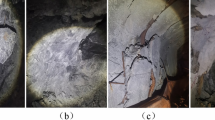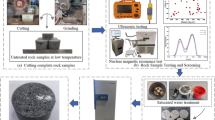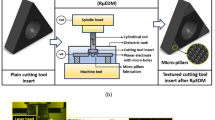Abstract
Objective The aim of these experiments was to compare the cutting dynamics of high-speed high-torque (speed-increasing) and high-speed low-torque (air-turbine) handpieces and evaluate the effect of handpiece torque and bur type on sub-surface enamel cracking. Temperature changes were also recorded in teeth during cavity preparation with high and low torque handpieces with diamond and tungsten carbide (TC) burs. The null hypothesis of this study was that high torque handpieces cause more damage to tooth structure during cutting and lead to a rise in temperature within the pulp-chamber.
Materials and methods Images of the dynamic interactions between burs and enamel were recorded at video rate using a confocal microscope. Central incisors were mounted on a specially made servomotor driven stage for cutting with a type 57 TC bur. The two handpiece types were used with simultaneous recording of cutting load and rate. Sub-surface enamel cracking caused by the use of diamond and TC burs with high and low torque was also examined. Lower third molars were sectioned horizontally to remove the cusp tips and then the two remaining crowns cemented together with cyanoacrylate adhesive, by their flat surfaces. Axial surfaces of the crowns were then prepared with the burs and handpieces. The teeth were then separated and the original sectioned surface examined for any cracks using a confocal microscope. Heat generation was measured using thermocouples placed into the pulp chambers of extracted premolars, with diamond and TC burs /high-low torque handpiece variables, when cutting occlusal and cervical cavities.
Results When lightly loaded the two handpiece types performed similarly. However, marked differences in cutting mechanisms were noted when increased forces were applied to the handpieces with, generally, an increase in cutting rate. The air turbine could not cope with steady heavy loads, tending to stall. 'Rippling' was seen in the interface as this stall developed, coinciding with the bur 'clearing' itself. No differences were noted between different handpieces and burs, in terms of sub-surface enamel cracking. Similarly, no differences were recorded for temperature rise during cavity preparation.
Conclusions Differences in cutting mechanisms were seen between handpieces with high and low torque, especially when the loads and cutting rates were increased. The speed increasing handpiece was better able to cope with increased loading. Nevertheless, there was no evidence of increased tooth cracking or heating with this type handpiece, indicating that these do not have any deleterious effects on the tooth.
Similar content being viewed by others
Log in or create a free account to read this content
Gain free access to this article, as well as selected content from this journal and more on nature.com
or
References
Mercer C . Lasers in dentistry: a review. Part 1. Dent Update 1996; 23: 74–80.
Renson C E . Back to the future in cavity preparation. Dent Update 1995;
Yip H K, Samaranayake L P . Caries removal techniques and instrumentation: a review. Clin Oral Invest 1998; 2: 148–154.
Watson T F . The Application of Real-Time Confocal Microscopy to the Study of High Speed Dental Bur/Tooth Cutting Interactions. J Microscopy 1990; 157: 51–60.
Watson T F . Applications of High Speed Confocal Imaging Techniques in Operative Dentistry. Scanning 1994; 16: 168–173.
Watson T F, Cook R J C . The Influence of Bur Blade Concentricity on High Speed Tooth Cutting Interactions: a Video-Rate Confocal Microscopic Study. J Dent Res 1995; 74: 1749–1755.
Kasloff Z, Swartz M L, Phillips R W . An in vitro method for demonstrating the effect of various cutting instruments on tooth structure. J Pros Dent 1962; 12: 1166–1175.
Kasloff Z . Enamel cracks caused by rotary instruments. J Pros Dent 1964; 14: 109–116.
Brown W S, Christensen D O, Lloyd B A . Numerical and experimental evaluation of energy inputs, temperature gradients and thermal stresses during restorative procedures. J Am Dent Assoc 1978; 96: 451–458.
Boyde A . Enamel. In: Handbook of microscopic anatomy. Berlin: Springer Verlag, 1990; pp309–473.
Xu H H K, Kelly J R, Jahanamir S, Thompson Van-P, Rekow E D . Enamel sub-surface damage due to diamond tooth preparation. J Dent Res 1997; 76: 1698–1706.
Brockhurst P J . Dynamic measurement of the torque-speed characteristics of dental high speed air turbine handpieces. Aust Dent J 1994; 39: 33–38.
Dyson J E, Darvell B W . Dental air-turbine performance testing. Aust Dent J 1995; 40: 330–338.
Boyde A . Enamel structure and cavity margins. Oper Dent 1976; 1: 13–28.
Watson T F, Pagliari D, Sidhu S K, Naasan M . Confocal Microscopic Observation of Structural Changes in Glass Ionomer Cements and Tooth Interfaces. Biomaterals 1998; 19: 581–588.
Acknowledgements
The authors thank Dr Ron Wilson for his statistical support and Peter Pilecki for technical assistance. Work supported by grant GRJ 10135 from the EPSRC and in part by sponsorship from W&H (UK) Ltd.
Author information
Authors and Affiliations
Corresponding author
Additional information
Refereed paper
Rights and permissions
About this article
Cite this article
Watson, T., Flanagan, D. & Stone, D. High and low torque handpieces: cutting dynamics, enamel cracking and tooth temperature. Br Dent J 188, 680–686 (2000). https://doi.org/10.1038/sj.bdj.4800576
Received:
Accepted:
Published:
Issue date:
DOI: https://doi.org/10.1038/sj.bdj.4800576
This article is cited by
-
Heat generated during dental treatments affecting intrapulpal temperature: a review
Clinical Oral Investigations (2023)
-
Effect of spray air settings of speed-increasing contra-angle handpieces on intrapulpal temperatures, drilling times, and coolant spray pattern
Clinical Oral Investigations (2022)
-
Comparing the Effect of a Resin Based Sealer on Crown Retention for Three Types of Cements: An In Vitro Study
The Journal of Indian Prosthodontic Society (2013)
-
Temperature rise during photo-activated disinfection of root canals
Lasers in Medical Science (2009)
-
Temperature rise in cavities prepared by high and low torque handpieces and Er:YAG laser
British Dental Journal (2008)



